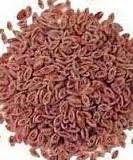Bael : Good Appetizer and Enchinacea: Immuno-stimulants

Bael : Good Appetizer Fruits are used for their medicinal property. Biologically, Bael consists of half ripe or unripe fruits of Aegle marmelos corr. Belongs to the family Rutaceae. Fruit pulp is red in color, mainly found in Sri Lanka, India and Myanmar. Main chemical constituent of Bael is marmelosin along with other coumarines. Fruit also contains good amount of carbohydrates, proteins, vitamins. Uses: · It is used as digestive and appetizer. · It is a good tonic. · It is also used in treatment of diarrhea and dysentery. Enchinacea: Immuno-stimulants Echinacea consists of dried underground parts of Enchinacea purpurea or E. Angustifolia or E. pallida, family Asteraceae. Other names of Enchinacea is black Sampson, cone flower brauneria, mainly founds in U.S.A. and Canada. Color is pale brown to yellowish brown. Enchinacea species contains various types of Phytochemicals and polysaccharides responsible for its immunosti




